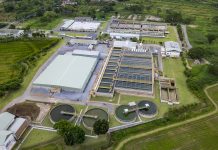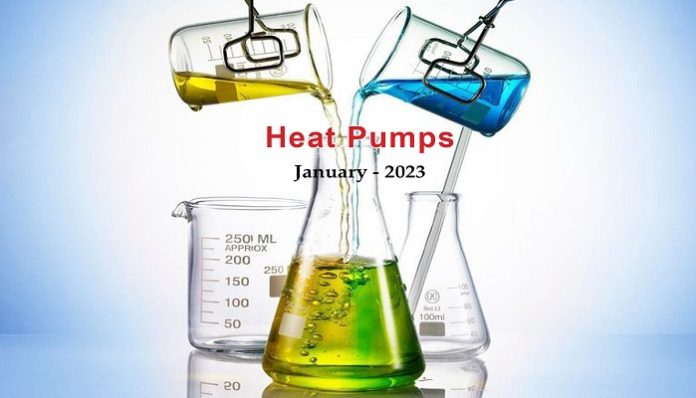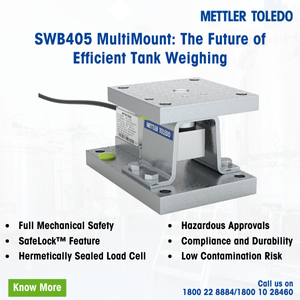This month’s column throws light on the record increase in sales of heat pumps and the surge of interest in this more than century old equipment. The energy crisis in Europe, in the wake of the Ukraine war, is one of the major reasons for the large scale adoption of heat pumps for domestic heating and also for increasing industrial applications. The heat pump works on the principle of transferring heat from a certain temperature to a higher temperature. What is unique is that heat pump does not always need higher temperature and can well use readily available low temperature waste heat. Heat pumps help in reducing carbon emissions also.
The conflict in Ukraine has revived the fortunes of a more than 150-year-old contraption – The Heat Pump. Peter Ritter von Rittinger, an Austrian engineer is credited with the design and installation of the first practical heat pump system at a salt works in Austria in 1856. In mid-19th century, salt works in Austria were using locally available wood for fuel. And they quickly ran out of it. Rittinger constructed a chamber divided into two parts separated by a horizontal metal partition. Brine from the salt mine was pumped into the upper chamber, which was maintained under vacuum by a waterwheel driven compressor. The compressed steam released its heat inside the lower chamber, which was transferred by the conductive metal partition to the upper chamber to precipitate out the salt. Rittinger’s heat pump, which was called “Steam Pump”, was a cumbersome, yet highly effective device.
Principle
A heat pump is a device that transfers heat from a certain temperature to a higher temperature by adding electric power and thus heat is recovered from an unusable temperature to a temperature where it is useful, for example process or space heating. The principle of the modern heat pump is the same as that of the household refrigerator. The refrigerant, a liquefiable gas, is evaporated at low pressure, compressed and then condensed at the higher pressure. An expansion valve closes the cycle and brings the refrigerant back to its initial state. During the evaporation process, the refrigerant absorbs heat from the surroundings – from within the refrigerator or a process heat source. While condensing, the heat is released into the ambient air. In a heat pump this discarded heat is put to practical use, say for room heating. The most important benefit of heat pump is that it produces more usable heat from the same amount of electrical energy than other technologies. Coefficient of performance (COP) is a handy metric to compare this and is defined as the ratio of useful heat to electricity consumed. Heat pumps typically have a COP between 2 and 4. Electric heaters have a COP of 1. Heating furnaces have a COP less than 1.
Domestic Heating
At present, nearly 40% of the global population lives in regions that experience ambient temperatures which would require space heating for at least part of the year. What has caught the imagination of the climate activists and policy makers is the application of the heat pump for domestic heating. In this application, the heat pump works exactly opposite to the refrigerator. The ambient air, however cold it may be, is used to evaporate the refrigerant which is at even colder temperatures. The hot compressed refrigerant gas transfers the heat to water circulating inside the radiator coils. The heat pump thus does the work that would typically be done by a gas-fired boiler or electric heater. For this application, heat pumps come in three types depending on the source of heat. The most common kind is the air-source heat pump that moves heat between the outside air and the building. Worldwide, almost 85% of all heat pumps sold for buildings are air‐source, as they require the least effort to be installed. The other two kinds, ground-source and water-source are more efficient, but also more expensive to install. Field trials have started for testing a prototype air-source heat pump that is designed to perform in extreme winter with temperatures below minus 290 C.
Process Applications
Heat pump is based on the simple and yet less understood principle that supply of energy does not always require high temperatures. Low-temperature waste heat is available in almost all industries. This is typically rejected to atmosphere by using cooling towers. Heat pumps can be deployed to gainfully exploit this low-grade heat. Distillation at low and medium temperatures is a typical low-hanging fruit application for the heat pump. Heat pumps can be used to elevate the temperature of the column overhead vapours and use it as a heat source for the reboiler. The heat of condensation of the overhead vapours can be captured and upgraded to supply the reboiler duty in the distillation column. COP of 4 can be realised in this application. More importantly, the fossil fuel required to produce the steam for reboiler is eliminated.
High Temperature Heat Pump
Industrial applications of heat pump have so far been limited up to a maximum of 100 degrees C. Concerted efforts are now underway to extend the range of heat pumps to 200 degrees C. The main thrust is on the development of suitable compressors for the refrigerant. Refrigerants and compressors are crucial to the functioning of heat pumps. Scroll compressors are widely used in heat pumps. A rotary vane machine is being tested for high temperature applications. A typical heat pump refrigerant requires only a small temperature change to transform from liquid to gas and back. R410A is the most widely used refrigerant in heat pumps, but is on course to be replaced by R32, which has a significantly lower Global Warming Potential. R1233zd(E) is a promising new working fluid (refrigerant) for high-temperature heat pumps.
Future Outlook
Heat pump technology has been mature for decades, but the Ukraine war and the consequent energy crisis has thrust it into the limelight. In June last year, President Joe Biden invoked the Defence Production act to ramp up the production of building blocks for a clean energy economy; the heat pump is included among the list. Compressor, heat exchanger and electronics are the largest cost components in manufacturing a heat pump and together constitute around two‐thirds the cost of an air-source heat pump. Economies of scale are expected to drive down the costs of heat pumps over the rest of the current decade. As per International Energy Agency, around 10% of space heating needs globally were met by heat pumps in 2021, but the pace of installation is growing rapidly with sales at record levels. Financial incentives for heat pumps are already available in over 30 countries, which together cover more than 70% of heating demand today. The IEA estimates heat pumps globally have the potential to reduce global carbon dioxide emissions by at least 500 million tons in 2030 – equal to the annual carbon dioxide emissions of all cars in Europe today.
Epilogue
The 1973 oil crisis gave birth to Energy Efficiency. The 2022 crisis has brought heat pumps into forefront. Cometh the crisis, cometh the solution
Readers’ responses may be sent to:
k.sahasranaman@gmail.com or
chemindigest@gmail.com






























